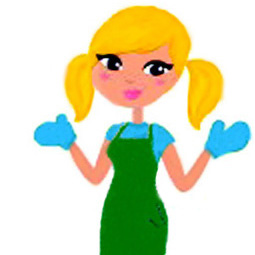I enjoy reading about food whether it be about nutrition, ethics, or in this case the future of food. Knowing more about the food we eat helps us make better decisions on what we should be eating. I picked up The Taste of Tomorrow by Josh Schonwald from the library... I can't remember if it was on a recommended reading list, if it was one of my random keyword searches, or if the library had it on the endcap (they always seem to know exactly what to put there so I walk out with ten books instead of two). Definitely an interesting (and quick) read! I want to summarize the key ideas for everyone, but would recommend picking up the book for more detail.
Not that long ago, the lettuce section at the grocery store had a lot fewer choices. Iceberg or romaine. Then came the 80s and the advent of bagged lettuce. Farms could pack the delicate leaves in a specially made bag that allowed them a shelf life. Spinach could be packed fresh instead of sold only in the frozen food section. Spring mixes, arugula, red leaf, musclen exploded into the produce section. No other food trend had a greater impact than bagged lettuce. Josh was in search of the next big idea. He followed farmers, studied grocery stores, and went to farmers markets. His five best guesses are purslane, radicchio, central asian lettuces, shiso, and colored carrots (which I think the last one is already trending).
Genetically modified organisms (GMOs) have been a hot topic lately. With big companies like Monsanto engineering seeds with chemicals to kill pests, it is no wonder there is a lot of controversy here. On the flip side, this book talks about the positive side to GMOs created in small labs with goals like feeding the world instead of gaining profits. Cross breeding different plants as well as cellular combinations like tomatoes with fish DNA can increase durability, flavor, and nutrition. Providing more nutrient dense foods to hungry nations would prevent a lot of disease and hunger. However, with all of the GMO aversion lately, these small labs are underfunded. Even if they create something revolutionary, people would still need to accept GMOs for it to be successful.
Another controversial topic that I know I am passionate about is the rise against Concentrated Animal Feeding Operations (CAFOs) thanks to books like Food Matters and Food Rules. While there has been a trend of people eating less meat, most people aren't willing to give up meat altogether. With demand out paces the amount of land to raise all animals free range, this book looks for the future's solution... in vitro (test tube) meat. There has been some success essentially cloning cells into muscle tissue, it still has a long way to go. In vitro meat has PETA's support... but everyone will still have to get over the ick factor of eating something raised in a test tube.
CAFOs don't stop at just land animals. The fish we have deemed tasty have also seen their populations disappear from the ocean. I was lucky enough to see how Seattle has worked to protect wild salmon after decades of over-fishing. To keep up with demand, fish are now farmed in large tanks and even larger quantities. This book investigates the next big fish (cobia) and how people have started fish farming indoors. The tanks are in a dark room and so densely packed that they have little room to swim. Could this be the next food controversy? How do you balance happy fish without over fishing the ocean? One fish farmer is coastal farming by having their tanks actually in the ocean with fewer fish. However laws are preventing expansion of this idea because of coastal protection laws.
The next point in the book involves ethnic foods. Many foods from around the world are available everywhere; Chinese, French, Japanese, Italian. So much so that foods are defined by regions; Sicilian, Tuscan, and more. It seems we might have every country's traditional (and Americanized) food available to us! There is just one left to be the future of ethnic foods... sub-Saharan Africa. Not exactly sure what to expect from this style of cooking, but I have been to an African restaurant in New Orleans... so this may already be trending in foodie towns.
The last thought on the future of food is that there will be no food, just a pill. I know I take a multi-vitamin every morning, I know that my body will absorb nutrients better from whole foods. There are certain things that your body will never be able to digest and utilize from a pill like fats and proteins. That is why the book follows the findings in nanotechnology which is essentially splitting and rebuilding atoms into specific formations (think back to chemistry class when you had to draw how hydrogen and oxygen were linked to create water). The problem with splitting atoms is you end up with something radio active, albeit very small so you would need a lot to cause a problem. The reason we overlook the dangers of nuclear power is the amount of energy it generates. One nanotech pill could power a human for 80 years without food!
So... what do you think the future of food will be? Could you give up food altogether if you never felt hungry and had energy to spare?
Yum



No comments:
Post a Comment